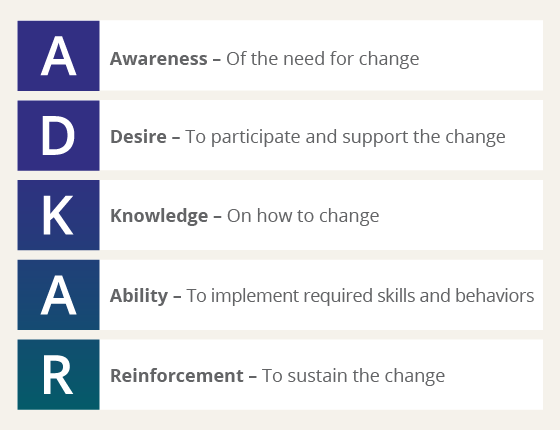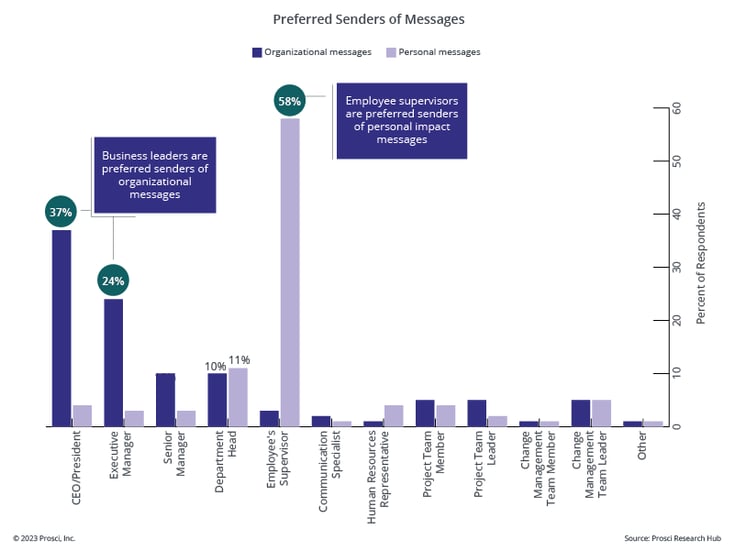
4. Next, answer the WIIFM question
WIIFM stands for “What’s in it for me?” It’s a question people always ask during change, even when the change seems positive. Because making a change is a personal choice, communications only resonate with the impacted individuals if you address what they care about. To influence their Desire to participate and support the change, you must provide a compelling case for how they will be better off or what they get out of engaging in the change. You must answer, “What's in it for me?” early and often in your communications.
Prosci ADKAR Model

5. Preferred senders should repeat key messages five to seven times
The first time a change is communicated, people will immediately think about how the change will impact them and won’t be able to focus on any other details of the change. Having the preferred senders repeat key messages ensures that the messages you want to communicate get heard by your audience as you intended. Share messages more often than you think necessary.
6. Resist the urge to communicate exclusively through the project team
People prefer to hear messages from two roles in the organization, and neither is the project leader or change manager. One of the biggest and most common mistakes you can make is to have your project team sending all the communications.
7. Find effective ways to reach your audience
An effective communications plan uses numerous channels to reach impacted individuals. The communications channels could include virtual or in-person meetings, small group forums, one-on-one conversations, newsletters, presentations, brainstorming workshops, focus groups, lunch and learns, intranet Q&A forums, screen-saver messages, etc.
8. Emphasize face-to-face communications
Prosci research identifies face-to-face communication as the most effective mode of communication for change initiatives. While it is more time intensive to meet with someone live—either in person or virtually—the effort delivers far more value than an email message.
9. Create opportunities for two-way communications
You need to ensure your communications plan includes opportunities for two-way communication. For example, having executives and senior leaders communicate directly with people in small-group forums gives the participants the opportunity to share their concerns, provide feedback, and ask questions. Two-way communications lead to greater support and commitment for the change and allow preferred senders to answer questions in real time.
10. Evaluate the effectiveness of your communication messages
Communications should not be viewed as an activity to plan, deliver, and then check off the list of work to be done. The desired outcome of change-related communications is to ensure that impacted individuals and groups are well informed about a change and are committed to adopting in in their daily work. You need to evaluate if your audience is hearing and properly interpreting the messages you send. Use a combination of post-communication surveys, focus groups, and individual interviews to assess the effectiveness of the communications and then take adaptive actions if necessary.







